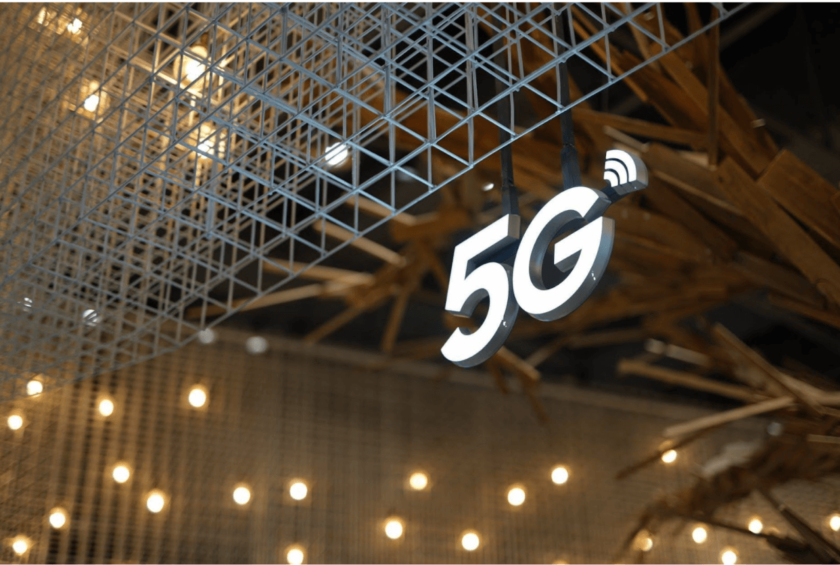Many households and businesses today rely on fast internet connections for their communication and operational needs.
Companies need fast and stable internet to ensure their financial, operational, and marketing transactions and access to digital insights are processed quickly and reliably.

Businesses also need secure wired and wireless networks using cloud-managed installation and remote management.
As more cities, industries, and countries gain access to high-speed internet, demand for fibre optic technology will grow.
Looking into the future, we can see fibre optic applications and technologies continuing to grow as fibre remains to be the fastest connection available to the public.
This article briefly discusses what optical fibre is, its future trends, and the challenges this technology faces.
What Is Optical Fibre?
Fibre optic technology utilizes light to transmit data over long distances. While telephone wires or television cables use copper wires to transmit electronic signals, fibre optics use glass or plastic strands to send light pulses.
The glass strands used in fibre optics have about the same diameter as human hair. Hundreds of these strands are bundled up in a protective casing.
Since light travels faster than electricity, fibre optic connections can send data more quickly and at higher capacities than other methods like DSL or cable internet.
Future Digital Opportunities for Optical Fibre
Despite being the fastest internet connection, there is still more in store for fibre optics moving forward into the future. In particular, some of the opportunities for this technology include the following:
City-Wide Communication Networks
The increased availability and lower cost of fibre optic internet are slowly making the wide-area application of this technology more feasible. Thus, more people in large urban areas can benefit from fast internet connectivity.
As this trend continues, we witness a growing interest in implementing city-wide fibre optic infrastructure. Cities like San Francisco are already considering connecting every business and household with fibre optics.
5G and Fibre Optic Connectivity
Telecom providers are now relying on fibre optic technology to deliver 5G services to their customers. Although 5G is a high-speed wireless network technology, 5G can only go as fast as its primary line’s speed.
Thus, having fibre optic infrastructure as 5G’s backbone makes sense. Fibre optic’s high speed allows 5G networks to deliver fast internet and serve more customers that use 5G-capable devices.
Internet Access to Underserved Nations
Many developed nations are enjoying fast internet access, thanks partly to fibre optic connectivity in these countries.
However, some developing and underdeveloped countries do not yet have the same opportunities to access the internet in the same capacity.
Fortunately, lowering technological costs may enable these underserved countries to access high-speed internet through fibre optics.
Technological Advances to Improve Fibre Optic Speed
Fibre optic connections rely on light to transmit data. Still, the technology relies on electricity to produce the light being sent through the fibre optic cables.
A recent technological development called all-optical networks (AON) addresses the electricity issue by allowing fibre optic data transfers with little to no electrical processing.
Some potential results of this development include longer transmission distances and lower electricity consumption.
Radio-over-fibre(ROF) is another technology that allows radio signals to be transmitted through optical fibres.
Since radio signals are not affected by electromagnetic interference, ROF shows potential practical applications in the aviation industry.
Other areas where we can implement this technology are large-scale construction works and public work projects.
Challenges
Fibre optic technology may provide the fastest internet connection to the public. However, despite its advantages, the technology still has hurdles to overcome.
One challenge is the need for new infrastructure. Other forms of internet connection, like DSL and cable, utilize existing telephone lines and television networks to deliver internet services.
Fibre optic internet relies on optical fibre connections. However, many areas do not yet have or have limited access to this kind of connection. This limitation drives costs up because new infrastructure has to be built.
For example, to establish a direct fibre connection from the East Coast to the West, we must build amplifying shelters every 60 to 100 kilometers. These shelters can be costly to construct and maintain.
Conclusion
Fibre optic technology has a promising future to develop even further and become accessible to more people. Fibre optic’s capacity to deliver fast internet allows households and businesses to increase their productivity, conduct their transactions reliably and on time.
Despite increased accessibility and lower costs, fibre optic internet still has limited utilization in underdeveloped or underserved countries.
However, as long as current trends continue, we may see more households, industries, and countries enjoying fast internet speeds brought by fibre optic technology.
It is best to consult an IT expert or internet provider to know more about fibre optics and whether this technology is a practical solution for our household or business needs.

